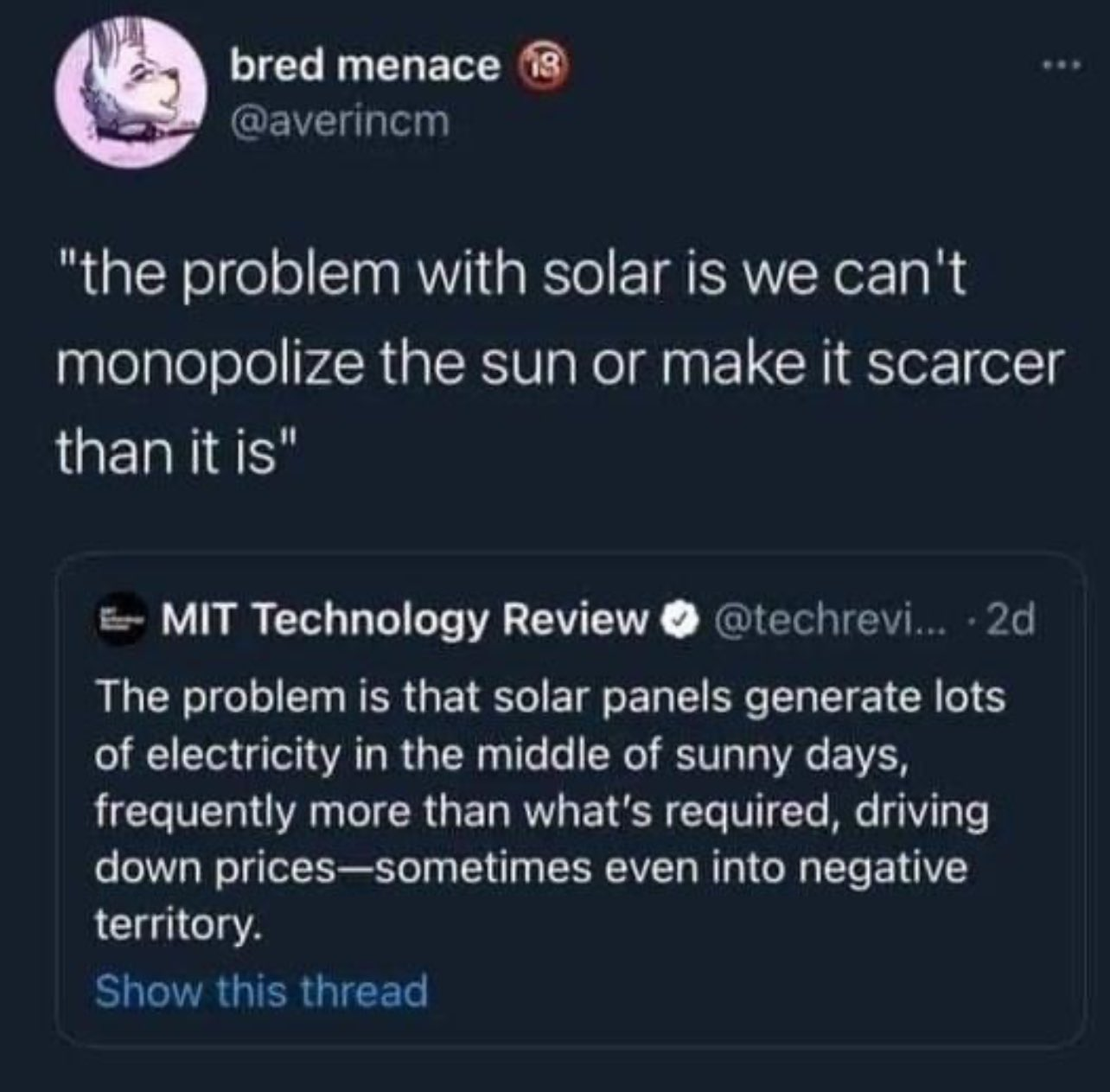this post was submitted on 02 Oct 2024
1697 points (95.6% liked)
Microblog Memes
6645 readers
2150 users here now
A place to share screenshots of Microblog posts, whether from Mastodon, tumblr, ~~Twitter~~ X, KBin, Threads or elsewhere.
Created as an evolution of White People Twitter and other tweet-capture subreddits.
Rules:
- Please put at least one word relevant to the post in the post title.
- Be nice.
- No advertising, brand promotion or guerilla marketing.
- Posters are encouraged to link to the toot or tweet etc in the description of posts.
Related communities:
founded 2 years ago
MODERATORS
you are viewing a single comment's thread
view the rest of the comments
view the rest of the comments

The sand silo heating projects that I've read about are used to feed the excess energy from electricity to central heating. The heat can be stored for months, but converting it back to electricity wouldn't be very efficient. It's "only" viable in places with district heating.
There are other power-to-x technologies out there, like splitting water to hydrogen and oxygen, and these are all good ways to use excess energy, but they won't help on stabilizing the electricity production. Hopefully these technologies can create enough demand for electricity that the prices will always be worth it for the producers, so they can begin (over)producing enough renewable energy to cover the baseload at all times.
The gas production in early 1900s sort of did the same. The gas was produced for heating and light, but the byproducts of gas production lead to all kinds of other very cheap chemicals and products. Similarly we need to think of excess electricity as a very cheap byproduct and invent uses for it, instead of attempting to "balance" it.
In my opinion, this shows why privatization of electricity production is an obstruction. It would have been easier to transition completely to renewable energy if it was a state monopoly setting a fixed price to enable overproduction without regard to price fluctuations.